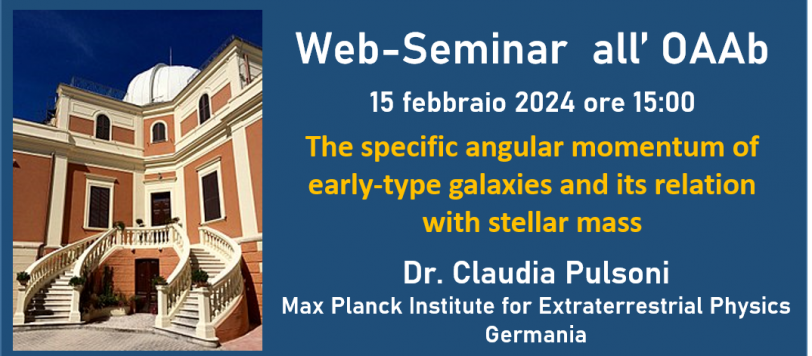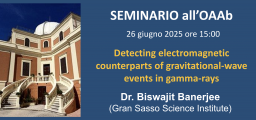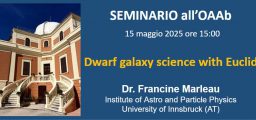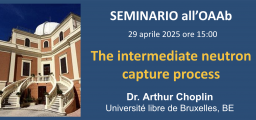Categories: Seminari
Tags: ERIS Formazione delle galassie Galassie
Posted by: Staff
Date: Feb 8, 2024
The specific angular momentum of early-type galaxies and its relation with stellar mass

Giovedì 15 febbraio alle ore 15:00, la Dr. Claudia Pulsoni del Max Planck Institute for Extraterrestrial Physics, Germania, terrà il seminario dal titolo “The specific angular momentum of early-type galaxies and its relation with stellar mass“.
Abstract
Mass and angular momentum (AM) are key parameters to understand galaxies. Their co-evolution establishes a tight relation between the stellar specific AM (j∗) and the total stellar mass (M∗) for disk galaxies. The case of massive early-type galaxies (ETGs) is far less explored, as a large fraction of their AM is distributed at large radii where stellar spectroscopy is unfeasible. In this talk, I present results for 32 nearby ETGs from the ePN.S survey based on extended 2D kinematics out to a mean 6 effective radii using planetary nebulae as tracers of the stellar halos. The results show that, once j* is integrated out to large radii, ETGs contain even less AM than previously found. This is a factor of 9 lower compared to spirals with similar M* (and up to a factor of 13 when including IMF variations). ETGs do not hide AM in their outskirts but loose it during their evolution and/or retain it in the hot gas component and the satellite galaxies that have not yet merged with the central galaxy.
A way forward to understand the main mechanisms that drive the evolution of j∗ in massive ETGs is to target their progenitors at high redshift with high-resolution observations. I will present preliminary results from the GALPHYS program. The survey leverages on the capabilities of the new AO-assisted ERIS/IFU spectrograph to resolve the internal structure of massive main-sequence galaxies at cosmic noon and map their kinematics, outflow, star-forming complexes, and ISM conditions on 0.5-1kpc scales with velocity resolution as fine as ∼10 km/s and ~5x higher sensitivity compared to its predecessor, SINFONI.
Scarica la presentazione in pdf






Comments are closed.